Miscellaneous projects
While I spend most of the time that I'm not doing research in the outdoors - mostly hiking or climbing mountains -, I occassionally manage to work on some other projects.
The natural arches of Catalonia
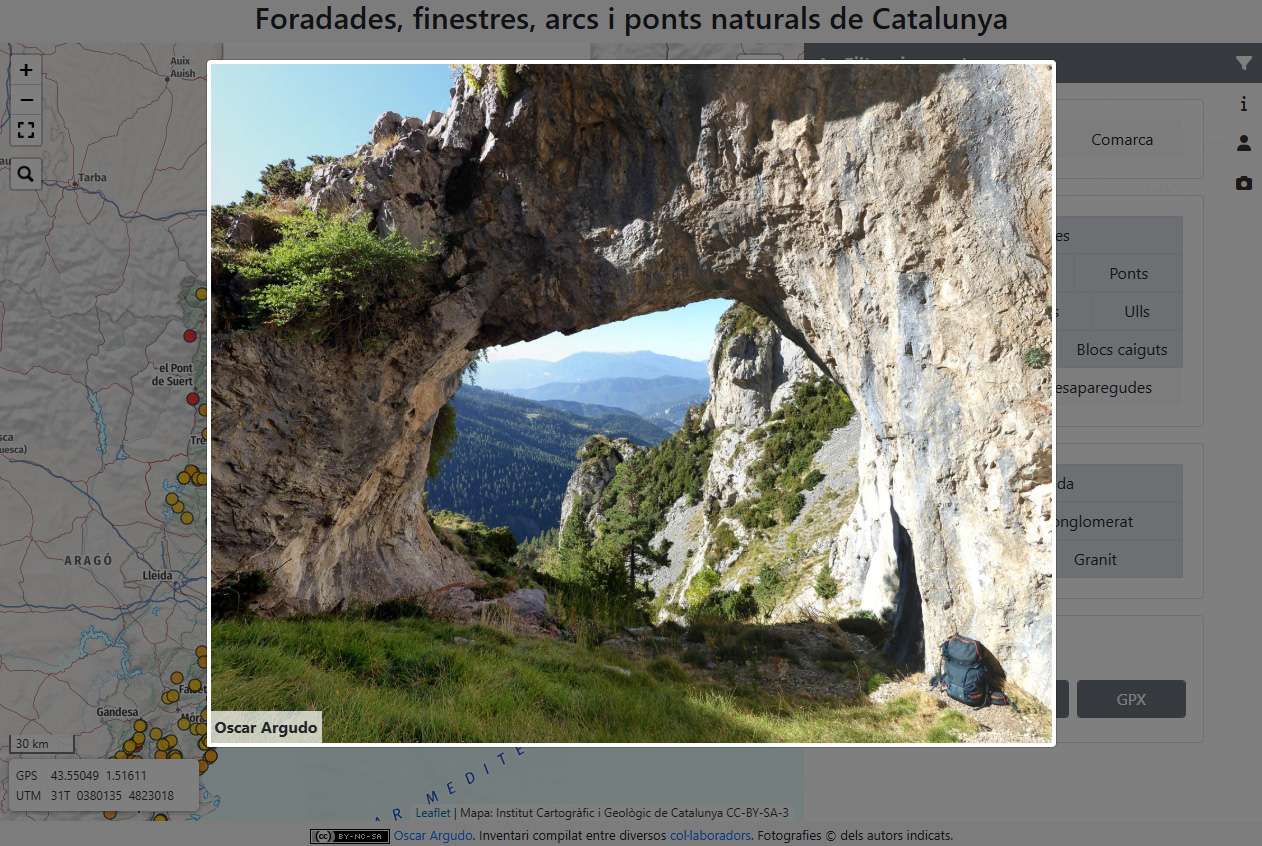
Apart from peak bagging, I’m also passionate about natural arches and beautiful rock formations. I’ve been collecting pictures of the many ones I’ve seen around and started compiling an inventory of arches in Catalonia. In 2023, Joan Escalé published a book describing hikes to some natural arches and included a first verion of the Catalan arches inventory. I contacted him and we decided to merge our information and make it available in a website, including details, pictures and references for every arch. Since its online publication, the inventory has almost doubled with new arches being added almost every month!
You can check the website of the inventory at www.foradades.cat.
3D textured models of Sant Quirze de Pedret church

Sant Quirze de Pedret is a church in Cercs, Catalonia (you can see the location here). The first pre-romanesque nave was built during the 9th century, and it underwent several architectural changes between the 10th and 13th centuries. The interior contained several paintings from the 11th and 12th centuries that were extracted to be exhibited in two different museums (MDCS and MNAC).
This project addressed the digital reconstruction of the church at different architectural and pictorial phases, for their use in a video display in the renovated exhibition at Museu Diocesà i Comarcal de Solsona. The 3D models of the architectural evolution of the church were created by a team of architects and art historian researchers. Following their indications, we generated procedural textures for realistic materials appearance. Then, using photogrammetric reconstruction from pictures taken at the two museums, we obtained 3D reconstructions of the mural paintings in their current exhibitions. Finally, we digitally reintegrated these paintings with the procedurally textured models.
World Ribus
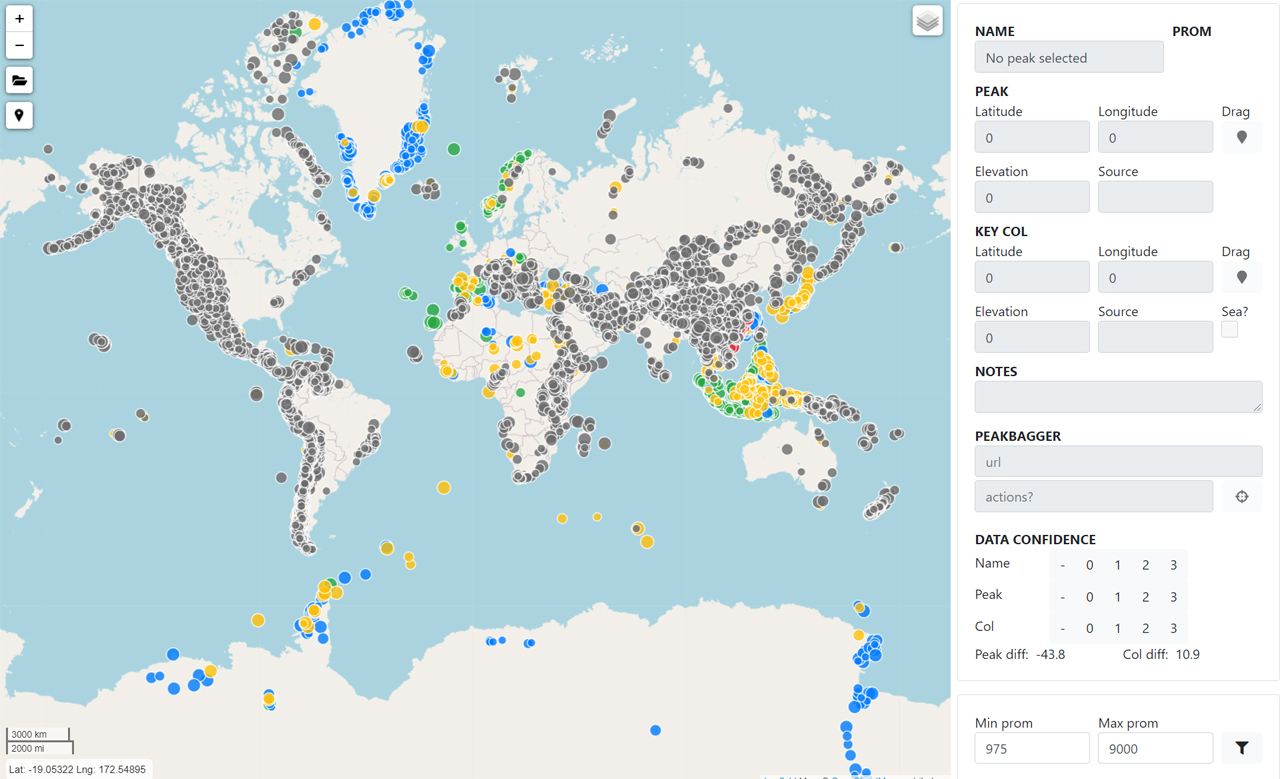
A “Ribu” is a mountain with at least 1000m of topographic prominence.
Using as a starting point the automatic analysis of all the world mountains prominence done by Andrew Kirmse in 2017, a group of enthusiastic prominence-driven baggers started in 2020 a manual check against local maps to list all the Ribus in the world. I created a web-app as a tool to facilitate cooperation between the different collaborators, adding also some useful functionalities, and to serve also as a public display of our progress. The final list has been published by Dan Quinn in a book including additional details and stories, and I participated in one of the chapters.
After completing the Ribus of the Earth, we are now using public DEM of different Solar System bodies to ellaborate the lists of Ribus in the Moon, Mars, Mercury… You can check the project at Space Ribus.
Prominence and other orometrics of Catalonia
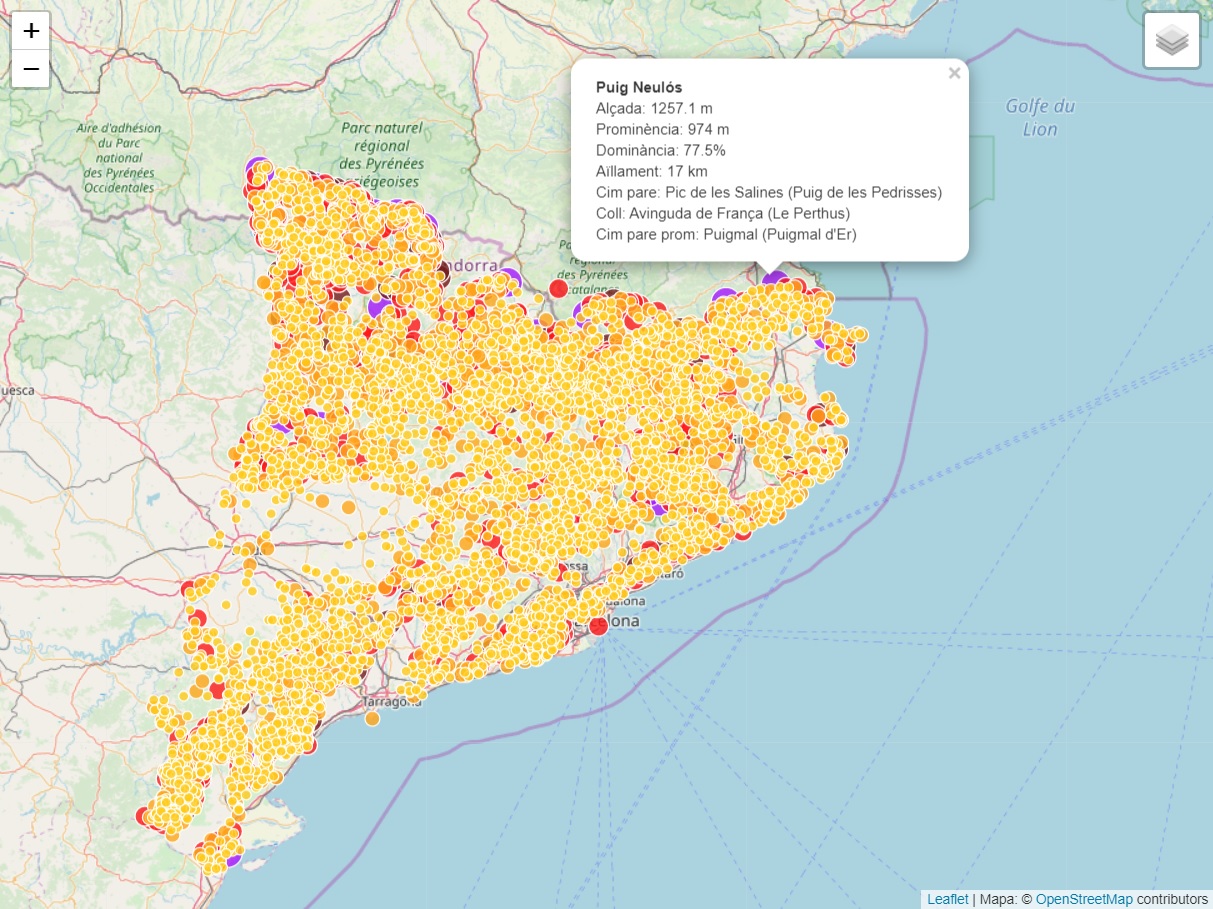
Some years ago, around 2013, I was introduced to the concept of topographic prominence by Toni Braza, a friend with whom I’ve shared many scrambles in Catalonia. He had been interested for a long time in computing a metric to describe how “impressive” a peak is, and among many other factors he had been computing by hand the prominence of the peaks in two small ranges near his city. I adapted Winprom source in order to work with the 5m grid terrain models of Catalonia provided by ICGC and automatically extract all peaks and prominences. Later, I developed a custom program to compute other metrics such as isolation or distance-based height averages around a summit - which turned to be, unknowingly, an attempt to model a measure very similar to the ORS previously proposed by E. Earl and D. Metzler!
All the found peaks (prominence > 30m) and discussion of results are online at www.1001cims.cat. Unfortunately, the discussion text is only available in Catalan at the moment, although I guess automatic translation does a decent job for the interested reader. I will add an English translation some day.
We plan on augmenting the computed set of metrics with ORS and other ideas in the future, and Toni is working on a parameterization and combination of several features in order to obtain his much desired “impressiveness” descriptor. I’ll keep this page updated with further advances. I would also like to release the source of the metrics program, once I adapt it to work with any input collection of DEM.
Global Game Jame 2014: You Paint Nothing Here!
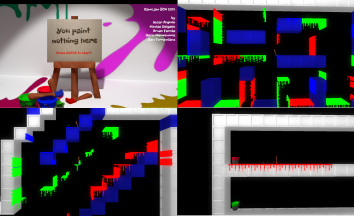
This was the game developed in 48h during the Global Game Jam 2014, with Nicolás Delgado, Daniel Torramilans, Dario Nieuwenhuis, and Arnau Farràs. The given topic was the following sentence: “We don’t see things as they are, we see them as we are”.
Each player controls a paintbrush in a race across the scenario to be the first one to reach the goal (a canvas). While everybody can see the white blocks, colored blocks are only visible for the player of the corresponding color. Players leave behind paint trails on any surface they touch, and everybody can see these trails. Therefore, players must be careful to not reveal too much of the surfaces they can see to the rest of players, and at the same time move quickly to win the race.
Check the GGJ project page here. It was developed using VBE, an OpenGL engine made by Dario Nieuwenhuis and Daniel Torramilans (I later contributed to expand some functionalities). Code for this game in particular can be found here.
Global Game Jame 2013: Zydon
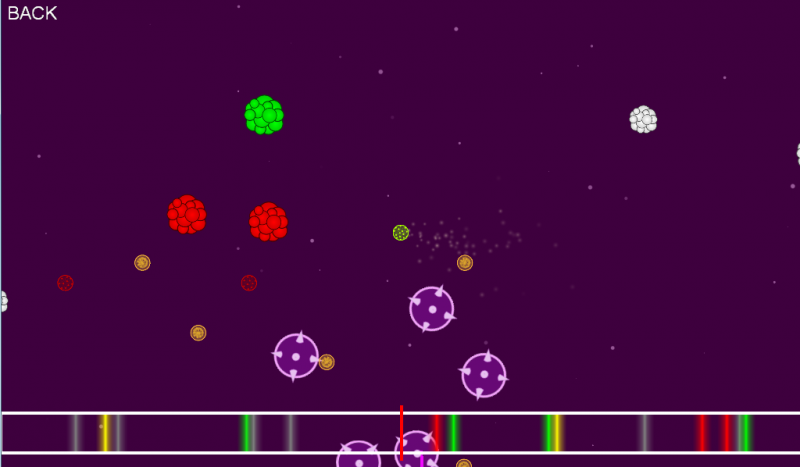
Game developed during the 48h Global Game Jam, with Jordi Santiago, Joan Viladrosa and Mario González. The given topic was an audio snippet with the sound of a heartbeat.
We created a gameplay that takes inspiration from Osmos combined with ideas from rhythm games. The goal is to conquer all the blobs in the scene. However, the player can only move when its color is active in the rhythm line. Every new blob converted to a player’s color will represent a new beat this player can use to move, since the angular position of each blob w.r.t. the center of the scene determines its timestep in the rhythm. The larger its army of blobs, the faster that player will be able to move.
For this project, we wanted to learn and experiment with Cocos2D-X framework. The “learning-and-silly-mistakes-phase” made us spend some time that would have been useful to polish the gameplay or aesthetic details, but isn’t experimenting what a game jam is all about? :)